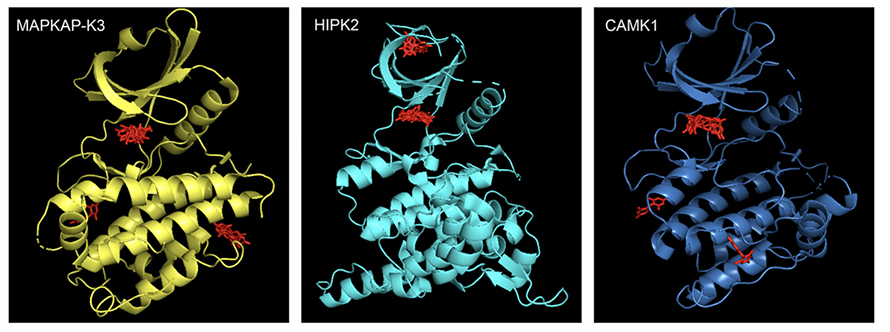How flame retardants could impair neurodevelopment
Evidence has been mounting for years that the flame retardants coating our furniture, electronics and construction materials are more harmful than helpful to human health. Members of one class of these retardants, polybrominated diphenyl ethers, or PBDEs, have come under increased scrutiny for their potential role in disrupting neurodevelopment, especially in children. Researchers have found that the 209 PBDE congeners can bioaccumulate in lipid-rich tissues, including in the brain, but the precise mechanism by which these compounds cause harm remains unknown.
Ramendra Saha, who effective Jan. 1 will be an associate professor of cellular and molecular biology at the University of California, Merced, first heard about PBDEs at the National Institute of Environmental Sciences, where he was a postdoctoral fellow. He listened to speaker after speaker describe the potential toxicity of these compounds that seemed to litter every home. As a new father at the time, he wondered how he could keep his son safe.
Armed with a background in neuroplasticity and transcription, Saha delved into the epigenetic effects of PBDEs in neuronal development and function.
Saha's lab found that certain PBDEs can act as promiscuous kinase inhibitors and disrupt a signaling pathway involved in cell growth, division and differentiation known as the mitogen-activated protein kinase extracellular signal-regulated kinase, or MEK–ERK, pathway.
"We were looking at environmental toxins that have been shown to have some correlation with intellectual disability and that act as an inhibitor to signaling cascades that are known to be important to normal neurodevelopment," Saha explained.
A paper in the Journal of Biological Chemistry describes the study in which Saha's team proposed a new mechanism by which one particularly toxic PBDE, 6-OH-BDE-47, known as 6-OH, could impair the MEK–ERK signaling pathway. Robert Poston, a Ph.D. student in Saha's lab at the time, noticed that MEK inhibitor PD0325901, or PD, had key chemical structures similar to 6-OH. Using 3D modeling software, the researchers simulated the binding interactions of both 6-OH and PD with MEK1.
The results were encouraging: 6-OH and PD both were calculated to bind in the same allosteric binding site for MEK1. When they tried to demonstrate this binding directly in the lab, however, they were stumped: Increasing amounts of 6-OH added to MEK1 did not lower MEK1 activity.
Teaming up with researchers at the University of Dundee in Scotland, they screened 6-OH with 140 kinases that represent most of the human kinome. Simulations of their top hits showed that 6-OH binding was most likely in the well-known ATP-binding pockets of the screened kinases, suggesting this PBDE could be a promiscuous ATP-competitive kinase inhibitor and could explain the complex and diverse effects of PBDE exposure.
Saha's group continues to study how 6-OH exposure can affect mitochondrial function, calcium homeostasis, regulation of synaptic function and other links to the impairment of MEK–ERK signaling.
Has Saha's work in the toxicology field changed his family's behavior? "Absolutely," he said. "We do not buy anything that is labeled 'fire resistant.'"
Though we might not be able to avoid PBDEs completely in items such as laptop computers, Saha suggests replacing old furniture and paying attention to consumer item labels to minimize exposure.

Enjoy reading ASBMB Today?
Become a member to receive the print edition four times a year and the digital edition monthly.
Learn moreGet the latest from ASBMB Today
Enter your email address, and we’ll send you a weekly email with recent articles, interviews and more.
Latest in Science
Science highlights or most popular articles

The science of staying strong
Muscles power every movement, but they also tell the story of aging itself. Scientists are uncovering how strength fades, why some species resist it and what lifestyle and molecular clues could help preserve muscle health for life.

Bacteriophage protein could make queso fresco safer
Researchers characterized the structure and function of PlyP100, a bacteriophage protein that shows promise as a food-safe antimicrobial for preventing Listeria monocytogenes growth in fresh cheeses.

Building the blueprint to block HIV
Wesley Sundquist will present his work on the HIV capsid and revolutionary drug, Lenacapavir, at the ASBMB Annual Meeting, March 7–10, in Maryland.

Gut microbes hijack cancer pathway in high-fat diets
Researchers at the Feinstein Institutes for Medical Research found that a high-fat diet increases ammonia-producing bacteria in the gut microbiome of mice, which in turn disrupts TGF-β signaling and promotes colorectal cancer.

Mapping fentanyl’s cellular footprint
Using a new imaging method, researchers at State University of New York at Buffalo traced fentanyl’s effects inside brain immune cells, revealing how the drug alters lipid droplets, pointing to new paths for addiction diagnostics.

Designing life’s building blocks with AI
Tanja Kortemme, a professor at the University of California, San Francisco, will discuss her research using computational biology to engineer proteins at the 2026 ASBMB Annual Meeting.

